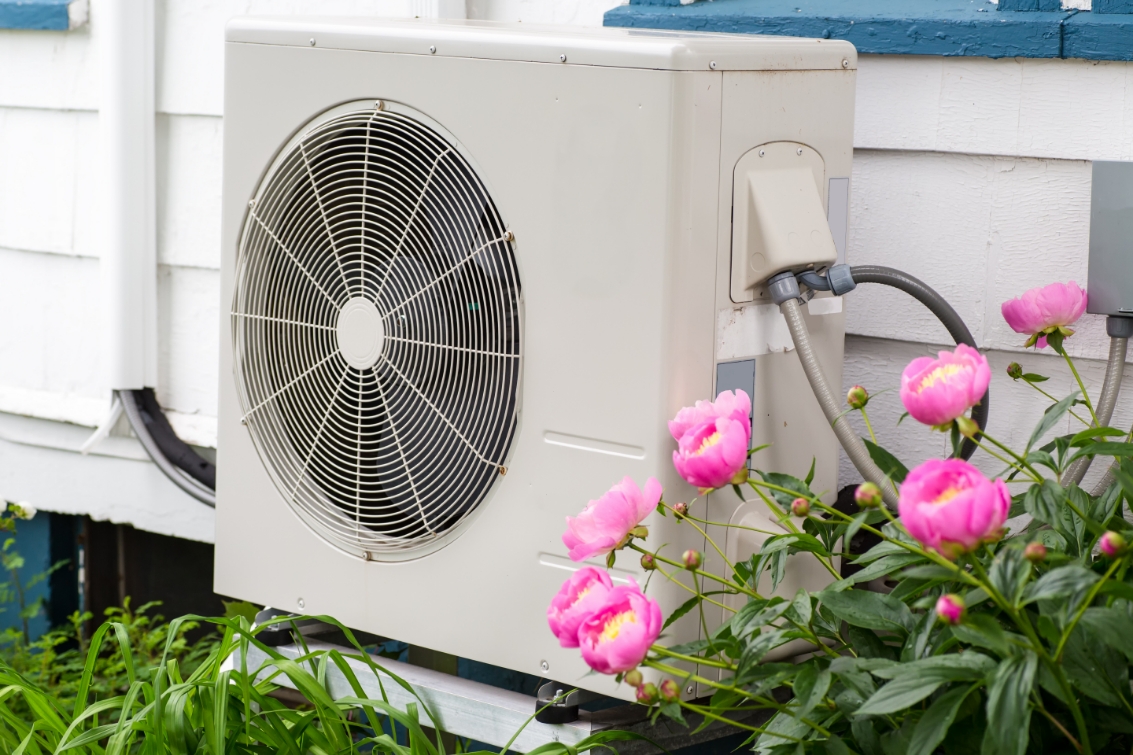Heat Pump vs. Traditional HVAC: Is a Heat Pump Right for Your Home?
editWhen it’s time to choose a new residential heating and cooling system for your Ohio home, the decision can feel overwhelming with so many options on the market. Two of the most popular choices are heat pumps and traditional HVAC systems, which include furnaces for heating and air conditioners for cooling.
Heat pump installation and traditional HVAC system installation have their own set of advantages, but understanding how they compare, especially in Ohio’s unique climate—can help you make the best decision for your home’s comfort, energy efficiency, and budget.
How Do Heat Pumps Work?
An air-source heat pump is an energy-efficient system that can both heat and cool your home by transferring heat from one area to another. In heating mode, it extracts heat energy from the outside air (even during extremely cold weather) and transfers it indoors using refrigerant.
In the summer, the reversing valve reverses the process, and the heat pump HVAC system pulls heat from inside your home to cool it down. This makes heat pumps a versatile solution, especially when you’re looking for a system that provides year-round comfort.
Geothermal heat pumps work similarly but use the constant temperature of the earth beneath the surface to heat and cool your home. While geothermal or ground-source heat pumps are highly efficient, they require specialized installation and are expensive to install.
Traditional HVAC: Furnaces and Air Conditioners
Traditional HVAC systems in Ohio typically consist of two separate units: a furnace, central heating system, and an air conditioner for cooling. The furnace generates heat by burning fuel (natural gas, oil, or propane) or using electricity and passing air over its heat exchange surface, while the air conditioner relies on refrigerants to absorb heat and cool the air. In this system, you need two distinct units for heating and cooling.
Efficiency: Heat Pump Systems vs. Traditional HVAC
One of the primary reasons homeowners are drawn to heat pump HVAC systems is their efficiency. Heat pumps transfer heat rather than create heat, which requires less energy compared to the combustion and heat exchanger processes in furnaces.
For heating, heat pumps can be up to 50% more efficient than traditional gas furnaces and baseboard heaters. This is because for every unit of electricity a heat pump uses, there are several units of heat produced, making it a highly efficient choice.
On the other hand, traditional HVAC systems—particularly gas furnaces—are known for providing a higher level of heat output. However, they also consume a significant amount of energy. Gas furnaces can be 80-98% efficient, depending on the model, meaning some energy is still lost via waste heat during the heating process.
When it comes to cooling, heat pumps are generally as efficient as central air conditioners.
Cost Savings: Heat Pump vs. Traditional HVAC
While heat pumps are known for their energy efficiency, the initial installation cost can be higher than a traditional HVAC system. This is because heat pumps are more complex systems that require both heating and cooling components in one unit.
Traditional HVAC systems have a lower upfront cost, especially if you’re only installing one unit (furnace or air conditioner), but the ongoing energy costs can be much higher over the years. Over time, you could save a significant amount on your energy bills with heat pump installation. Homeowners can save up to 50% on heating costs by using a heat pump compared to traditional heating systems.
In Ohio, where both heating and cooling are required throughout the year, a heat pump could offer substantial savings. However, if you already have a furnace and air conditioning system that is working efficiently, the cost of upgrading to a heat pump might not justify the savings in the short term.
Performance in Ohio’s Climate
Ohio’s climate is known for its extreme variations, with cold winters and hot, humid summers. A traditional furnace is often better equipped to handle the extreme cold of an Ohio winter and provide reliable, high-output heat. Heat pumps, on the other hand, are generally less efficient when the outdoor temperature drops below 40°F. This is because it becomes harder for the system to extract thermal energy from the outdoor air when it’s very cold.
However, newer cold climate heat pumps are designed with advanced technology, such as variable-speed compressors, that allow them to work efficiently even in temperatures as low as -5°F. For more efficient heating performance, select a heat pump model designed for colder climates.
During the summer months, heat pumps perform similarly to traditional air conditioning systems, providing cool, dehumidified air. For most of Ohio’s hot, sticky summers, a heat pump can provide the same level of comfort as an air conditioner.
Is a Heat Pump Right for Your Home?
A heat pump can be a great choice if you’re looking for an energy-efficient, all-in-one heating and cooling system for your Ohio home. It offers significant energy savings, versatility, and environmental benefits compared to the traditional furnace and air conditioner setup you may be used to.
Ultimately, the choice between a heat pump and a traditional HVAC system depends on your home’s specific needs, your budget, and your long-term energy savings goals. Consult with a professional HVAC contractor at Robinson Heating and Air Conditioning, Inc. to explore your options and determine which system is the best fit for your home and lifestyle.
If you’re ready to make the switch to a heat pump or just need more information, contact us today. Our expert team is here to help you find the best HVAC solution for your home.

